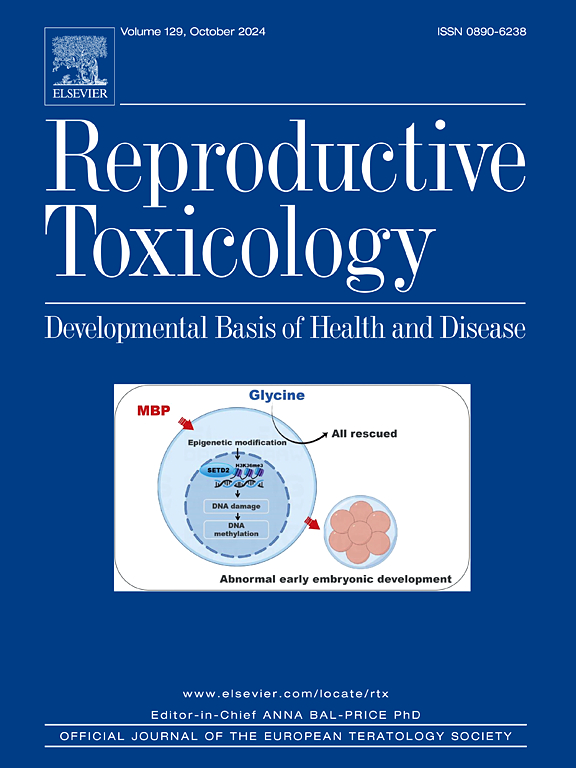Psychosocial stress and associations with inflammation in mid-gestation maternal, fetal, and placental tissue
IF 2.8
4区 医学
Q2 REPRODUCTIVE BIOLOGY
引用次数: 0
Abstract
Background
Inflammation has been implicated as an intermediary between psychosocial stress and adverse birth outcomes. However, prior work has mostly relied on maternal inflammation as a proxy for fetal inflammation mid-gestation or measured fetal inflammation in cord blood and placenta obtained at delivery. No studies have examined psychosocial stress in relation to fetal inflammation mid-gestation.
Methods
Twenty cytokines were measured in matched maternal blood, cord blood, and placenta obtained mid-gestation from a socio-demographically diverse group of pregnant participants undergoing elective second-trimester pregnancy terminations (N = 106). Corticotropin-releasing hormone, a proposed biomarker of gestational length, was measured in maternal blood. Perceived stress, and exposure to stressful life events, job strain, and social support were measured via questionnaires. We used linear regression to estimate associations between individual stressors and inflammatory biomarkers in each biomatrix and principal component analysis to assess groups of inflammatory biomarkers.
Results
We observed many matrix-specific associations between psychosocial stressors and inflammatory biomarkers. For example, low versus high social support was associated with significantly decreased levels of maternal blood CCL3 (β=-0.53; 95 % confidence interval [CI]=-0.98,-0.07), CCL4 (β=-0.26; 95 % CI=-0.47,-0.04), IL8 (β=-0.79; 95 % CI=-1.47,-0.11), CXCL9 (β=-0.47; 95 % CI=-0.89,-0.06), IFNγ (β=-2.28; 95 % CI=-3.60,-0.96), IL4 (β=-1.07; 95 % CI=-1.88,-0.26); and cord blood IFNγ (β=-0.83; 95 % CI=-1.52,-0.14). Social support was not associated with placental inflammation.
Conclusions
During mid-pregnancy, psychosocial stress─ particularly low social support─ was associated with maternal blood levels of select cytokines, suggesting a potential pathway linking social stress and inflammation. Our results indicate that the placenta may buffer these inflammatory effects on the fetus.
社会心理压力与妊娠中期母体、胎儿和胎盘组织炎症的关系
背景:炎症被认为是社会心理压力和不良分娩结果之间的中介。然而,先前的工作主要依赖于母体炎症作为妊娠中期胎儿炎症的代表,或者在分娩时获得的脐带血和胎盘中测量胎儿炎症。没有研究检查与妊娠中期胎儿炎症有关的社会心理压力。方法从社会人口统计学不同的妊娠中期选择性终止妊娠的孕妇组中获得匹配的母体血、脐带血和胎盘,测量20种细胞因子(N = 106)。促肾上腺皮质激素释放激素,一种被提议的妊娠长度的生物标志物,在母体血液中测量。感知压力、暴露于压力生活事件、工作压力和社会支持通过问卷测量。我们使用线性回归来估计每个生物基质中单个应激源和炎症生物标志物之间的关联,并使用主成分分析来评估炎症生物标志物组。结果我们观察到许多基质特异性的社会心理应激源和炎症生物标志物之间的关联。例如,社会支持高低与母体血液CCL3水平显著降低相关(β=-0.53;95 %可信区间(CI) = -0.98, -0.07),亚兰(β= -0.26;95 % ci =-0.47,-0.04), il8 (β=-0.79;95 % ci =-1.47,-0.11), cxcl9 (β=-0.47;95 % ci =-0.89,-0.06), ifnγ (β=-2.28;95 % ci =-3.60,-0.96), il - 4 (β=-1.07;95 % CI = -1.88, -0.26);脐带血IFNγ (β=-0.83;95年 % CI = -1.52, -0.14)。社会支持与胎盘炎症无关。结论:在怀孕中期,社会心理压力──尤其是社会支持水平较低──与母亲血液中某些细胞因子的水平有关,这表明社会压力和炎症之间存在潜在的联系。我们的研究结果表明,胎盘可以缓冲这些炎症对胎儿的影响。
本文章由计算机程序翻译,如有差异,请以英文原文为准。
求助全文
约1分钟内获得全文
求助全文
来源期刊

Reproductive toxicology
生物-毒理学
CiteScore
6.50
自引率
3.00%
发文量
131
审稿时长
45 days
期刊介绍:
Drawing from a large number of disciplines, Reproductive Toxicology publishes timely, original research on the influence of chemical and physical agents on reproduction. Written by and for obstetricians, pediatricians, embryologists, teratologists, geneticists, toxicologists, andrologists, and others interested in detecting potential reproductive hazards, the journal is a forum for communication among researchers and practitioners. Articles focus on the application of in vitro, animal and clinical research to the practice of clinical medicine.
All aspects of reproduction are within the scope of Reproductive Toxicology, including the formation and maturation of male and female gametes, sexual function, the events surrounding the fusion of gametes and the development of the fertilized ovum, nourishment and transport of the conceptus within the genital tract, implantation, embryogenesis, intrauterine growth, placentation and placental function, parturition, lactation and neonatal survival. Adverse reproductive effects in males will be considered as significant as adverse effects occurring in females. To provide a balanced presentation of approaches, equal emphasis will be given to clinical and animal or in vitro work. Typical end points that will be studied by contributors include infertility, sexual dysfunction, spontaneous abortion, malformations, abnormal histogenesis, stillbirth, intrauterine growth retardation, prematurity, behavioral abnormalities, and perinatal mortality.
 求助内容:
求助内容: 应助结果提醒方式:
应助结果提醒方式:


